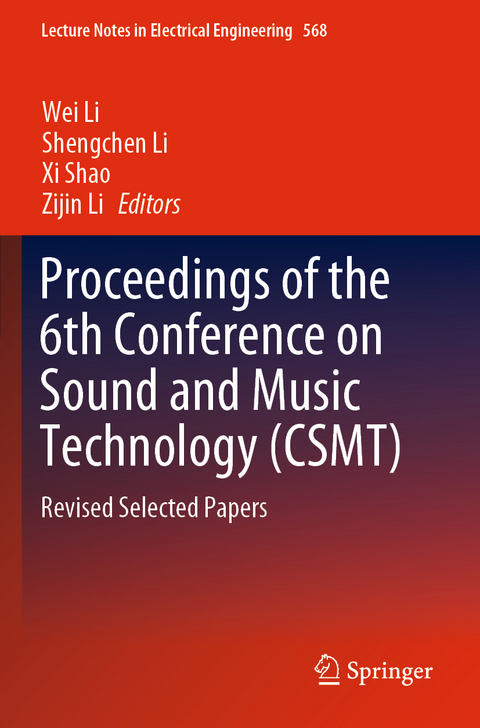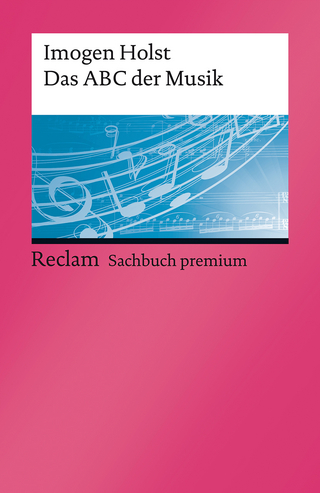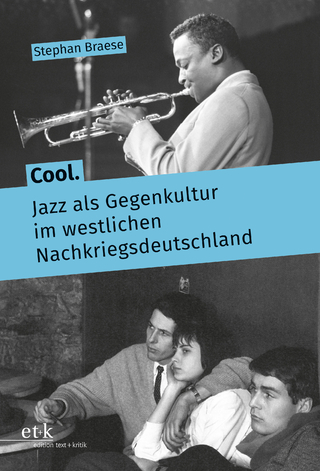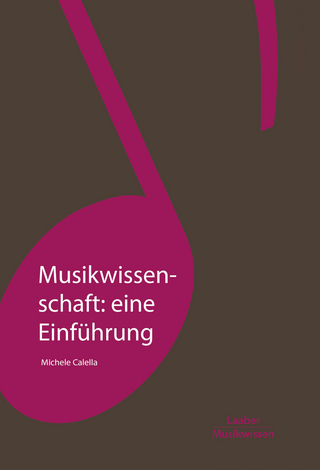
Proceedings of the 6th Conference on Sound and Music Technology (CSMT)
Revised Selected Papers
Seiten
2020
|
1st ed. 2019
Springer Verlag, Singapore
978-981-13-8709-8 (ISBN)
Springer Verlag, Singapore
978-981-13-8709-8 (ISBN)
This book discusses the use of advanced techniques to produce and understand music in a digital way. Moreover, machine-learning methods include popular deep learning algorithms and are used in a broad range of contexts, from discovering patterns in music features to producing music.
This book discusses the use of advanced techniques to produce and understand music in a digital way. It gathers the first-ever English-language proceedings of the Conference on Sound and Music Technology (CSMT), which was held in Xiamen, China in 2018. As a leading event, the CSMT reflects the latest advances in acoustic and music technologies in China. Sound and technology are more closely linked than most people assume. For example, signal-processing methods form the basis of music feature extraction, while mathematics provides an objective means of representing current musicological theories and discovering new ones. Moreover, machine-learning methods include popular deep learning algorithms and are used in a broad range of contexts, from discovering patterns in music features to producing music. As these proceedings demonstrate, modern technologies not only offer new ways to create music, but can also help people perceive sound in innovative new ways.
This book discusses the use of advanced techniques to produce and understand music in a digital way. It gathers the first-ever English-language proceedings of the Conference on Sound and Music Technology (CSMT), which was held in Xiamen, China in 2018. As a leading event, the CSMT reflects the latest advances in acoustic and music technologies in China. Sound and technology are more closely linked than most people assume. For example, signal-processing methods form the basis of music feature extraction, while mathematics provides an objective means of representing current musicological theories and discovering new ones. Moreover, machine-learning methods include popular deep learning algorithms and are used in a broad range of contexts, from discovering patterns in music features to producing music. As these proceedings demonstrate, modern technologies not only offer new ways to create music, but can also help people perceive sound in innovative new ways.
A Novel Singer Identification Using GMM-UBM.- A Practical Singing Voice Detection System Based on GRU-RNN.- Multimodal Music Emotion Recognition Using Unsupervised Deep Neural Networks.- Music Summary Detection with Feature Embedding.- Constructing a Multimedia Chinese Musical Instruments Database.- Bird Sound Detection Based on Binarized Convolutional Neural Networks.- An adaptive consistent Dictionary Learning for audio declipping.- A Comparison of Attention Mechanisms of Convolutional Neural Network in Weakly Labelled Audio Tagging.- A Standard MIDI File Steganography Based on Music Perception.
| Erscheinungsdatum | 17.07.2020 |
|---|---|
| Reihe/Serie | Lecture Notes in Electrical Engineering ; 568 |
| Zusatzinfo | VIII, 107 p. |
| Verlagsort | Singapore |
| Sprache | englisch |
| Maße | 155 x 235 mm |
| Themenwelt | Kunst / Musik / Theater ► Musik ► Musiktheorie / Musiklehre |
| Mathematik / Informatik ► Mathematik ► Angewandte Mathematik | |
| Technik ► Elektrotechnik / Energietechnik | |
| Schlagworte | Audio Information Security • Audio Signal Processing • Auditory Psychology • Composition • computer audition • music production • Sound design |
| ISBN-10 | 981-13-8709-5 / 9811387095 |
| ISBN-13 | 978-981-13-8709-8 / 9789811387098 |
| Zustand | Neuware |
| Haben Sie eine Frage zum Produkt? |
Mehr entdecken
aus dem Bereich
aus dem Bereich
Grundbegriffe, Harmonik, Formen, Instrumente
Buch | Softcover (2021)
Philipp Reclam (Verlag)
7,80 €
Jazz als Gegenkultur im westlichen Nachkriegsdeutschland
Buch | Hardcover (2024)
edition text + kritik (Verlag)
42,00 €


